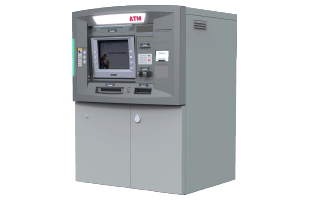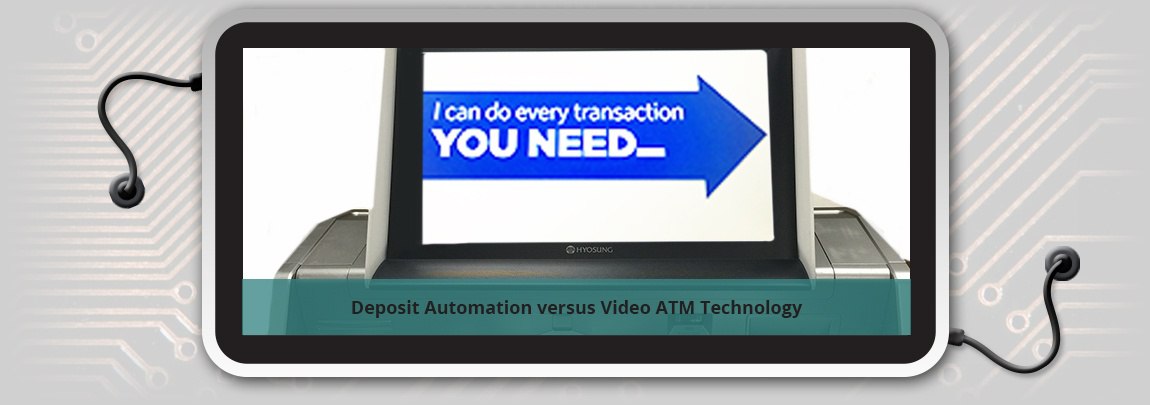Implementing ATM Deposit Automation From Start to Finish
Background: ATM and Deposit Processing Then and Now The steady growth of deposit automation since the early 2000s -- also known as Check 21, no...
3 min read
 Sean Farrell
:
Sep 8, 2015 7:30:00 AM
Sean Farrell
:
Sep 8, 2015 7:30:00 AM


You’ve just learned that one of your key competitors has been acquired and are bringing their ATMs near you. You have ‘Big Banks’ already in your region that have been offering deposit automation for the past year or more. And last Friday your newest and highly sought after retail and business customer tried to deposit their daughter’s birthday check from Grandma. She has also wanted to include some large notes from her wallet along with some larger business check deposits via the ATM at the downtown branch - all without an envelope. This caused havoc with other people in the drive through lane and sent the tellers scrambling. The staff is still reeling from that debacle almost a week later and your new key client is clamoring for you to ‘get with the times!’ What is the remedy to these issues? No envelope deposit services or a.k.a. deposit automation, Check 21, image deposit (all of the above!).
Over the past 10 years, deposit automation has seen 2 or 3 significant user interface and deposit convenience iterations. From the early ‘dual slot’ and dedicated deposit slots, one acceptor for only cash and a separate acceptor for just checks, to the current state of being able to accept check and cash in a single bulk stack. These advancments were significant to the North American market where checks and cash are steadily flowing with significant volumes between individuals and businesses and, in turn, throughout the branches of the financial institutions supporting them. The presence of deposit automation at the ATM by all accounts is now mainstream and continues to grow, but there is still much of the ATM landscape that is yet to convert to this popular technology. Don’t let the statistics mislead you, however. Most financial institutions either have a near-term plan to convert their existing ATMs, a plan to replace with new ‘factory ready’ no envelope units, or will potentially be acquired by an institution already well entrenched in the No Envelope ATM and will be required to convert.
The scenarios we brought you at the opening of this segment are influenced by the real life examples of institutions we’ve met with who did not have full understanding of the benefits of and customer demand for deposit automation at the ATM. They are reacting to the internal and external pressure to ‘do something’ as they are being perceived as a laggard to the no envelope deposit movement. This reactive approach is also not the best environment for a successful deployment. Fortunately, we understand the complete picture of deposit automation as a change in process, people, and technology and that they define the three vital keys to deposit automation success within your ATM channel:
1) Proper Technology Assessment
2) Alignment of marketing messaging and for use presence of "no envelope ATMs"
3) Adoption - by both end-customer and branch staff
Of these, customer and staff adoption is the most vital. The presence of deposit automation ATMs in your service and convenience offering is really about the transfer and assurance of basic customer trust. Customers want assurance that the items and cash placed into the ATM will be posted and reflected in their account any and every time, in an accurate, secure, easy and repeatable manner. Adoption equates to acceptance and user frequency. You can have confidence that the deposit ATM is a success when it is selected as the preferred and most frequently used channel within your multichannel format.
Marketing to your customers is vital. Your internal marketing, sales and customer service departments must create messaging and a communication strategy that generates excitement and clearly states the purpose for the solution. Successful promotion strategies to ensure customer adoption are easier now by utilizing online and mobile banking promotional channels to assist in message continuity or “uptake,” (i.e. ‘coming soon your Intelligent Deposit ATM’ or ‘join us Saturday morning from 9–11 to take your new ATM for a ‘test drive’). Several financial institutions have used these and other tactics, such as mailing out small deposit amounts in the form of checks (i.e. $5 amounts) to select customers inviting them to bring the check to the branch on a specific day so that they can experience the ATM deposit process. In nearly all of these training and customer adoption scenarios, financial institutions have incorporated ‘concierge services’ for several weeks during and after the solution is physically installed at the branch to have familiar branch personnel assist and train customers in completing transactions. Typically after the second or third visit to the branch and the ATM, the process is fully understood by the customer and they are successfully using the solution without any prompting from the branch staff. The most successful deployments tend to have a major training push from staff to the customer base showing them how easy the process can be and what transactions they can do at the new "Super ATM."
There are tangible benefits of deposit automation for both the customer and financial institution that will contribute to the ongoing success of the retail branch. With this ATM, you can continue to bring customers into your branches and offer true remote or satellite locations . Not only are you providing customers several options to conduct their transactions, but also positioning your institution for unique brand reinforcement.
If you haven't deployed deposit automation yet within your ATM channel, now is the time to consider doing so. If you are looking for inexpensive ways to grow your business either in new or existing markets, it's hard to beat the bang for the buck of a deposit automation ATM.

Background: ATM and Deposit Processing Then and Now The steady growth of deposit automation since the early 2000s -- also known as Check 21, no...

Looking to deploy deposit automation? Then you will want to read on to learn about the costs of installing and running deposit automation ATMs. There...

Today’s financial institutions are constantly challenged to continually identify and adapt their growth strategy while increasing efficiency.With...